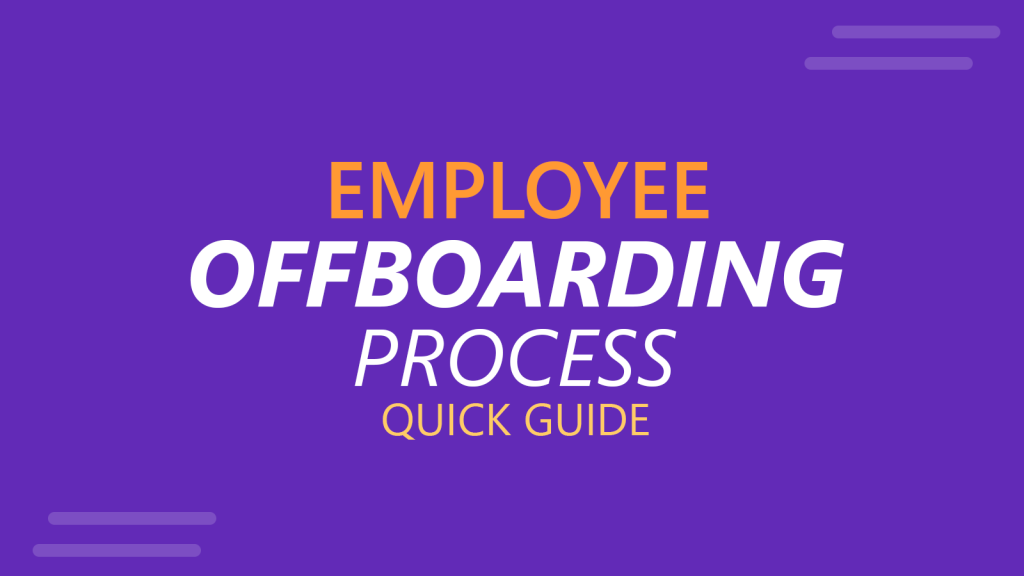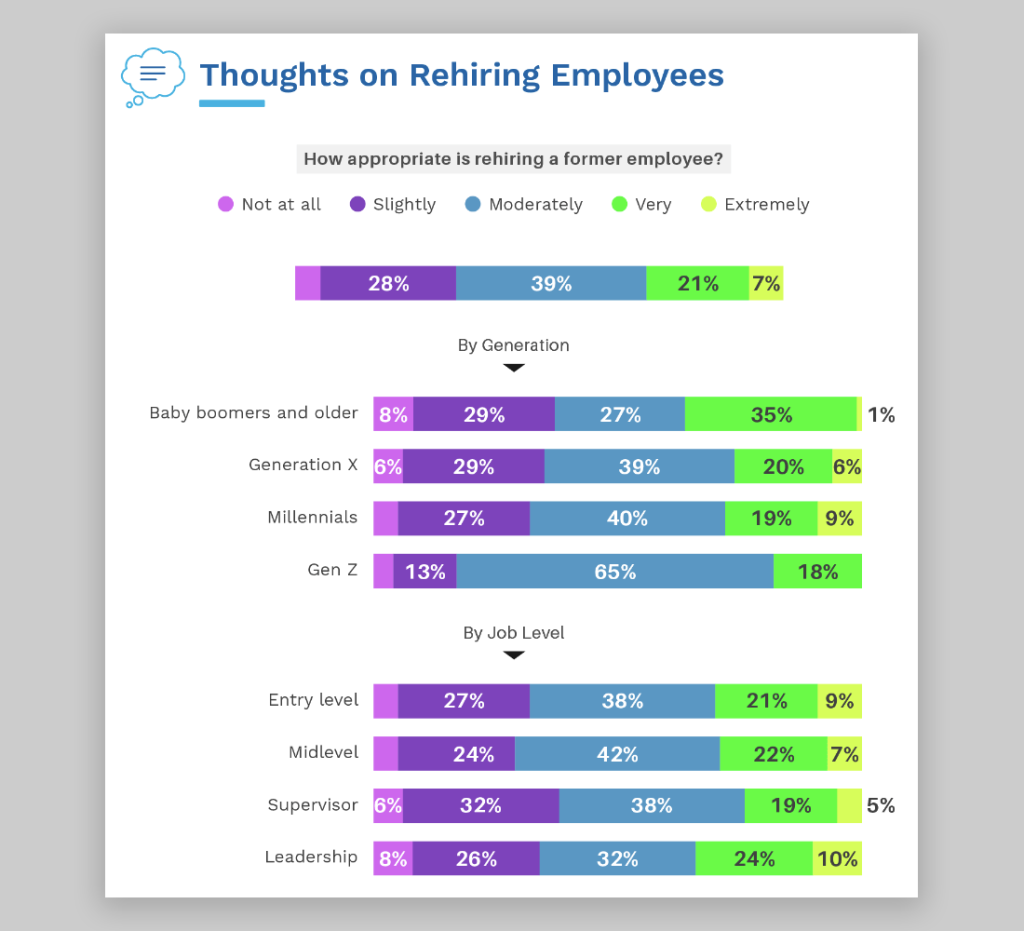Employee Offboarding Process: A Complete Guide for Businesses

Almost all organizations and businesses mainly focus on their onboarding processes to make the new employees feel comfortable at new workplaces and help them achieve their best potential while they perform their everyday duties. In order to attract and retain the best workforce, a business must ensure a great employee experience for all of its employees.
Similarly, when a professional leaves your organization or retires from his job role, it is important for the business to avail of this opportunity as well for his best advantage. Hence the Employee Offboarding Process becomes an equally essential process as the onboarding of the employees as it can be a great source for improving the brand name of the business, boosting the morale of existing and new employees, and also getting amazing feedback from the outgoing employees.
Is it important to value the Employee Offboarding process? How to effectively proceed with the employee offboarding process? All of these questions along with some other useful insights related to the employee offboarding process will be shared in this ultimate guide.
What is Employee Offboarding?
By definition, offboarding is a process in which an employee leaves an organization or business through either retirement, resignation, or termination. It involves all the activities that an employee goes through before leaving a company. It may include handling the previous responsibilities of the departing employee, changing or providing the previous passwords, and providing the company-owned equipment, tools, and gadgets back to the organization.
If the HR manager or senior executives can conduct an exit interview presentation, this is also beneficial for the business in general as the company can leverage the past experience of the leaving employees to improve the working environment for future and existing ones.
In general, one can conclude that offboarding is the process that marks the completion of a professional bond between an employee and an organization.
Why is Employee Offboarding Important for Businesses?
Employee offboarding is important for businesses and organizations due to several reasons. Some of them are given as follows.
Security for a Business’s Private Information
Every organization has some private information and data that they want to keep secure, especially from their competitors. A proper offboarding process of employees ensures that the private information of a company may never leave its premises.
When a manager properly farewells a leaving employee, he can sign certain disclosures with him and get access to previously owned company accounts and passwords. Most importantly, the IT department must disable all access of the departing employee to the company database to prevent future data breaches and theft.
Improvement in the Reputation of the Employers
It is very important for companies to manage and improve their reputation in the business landscape. For that purpose, a proper farewell to the departing employees is very essential. When an employee leaves the business on good terms, he spreads positive vibes and news about his formal company and through word of mouth, the reputation of the organization keeps improving. Positive feedback from previous employees is also important for attracting new talent for your business.
Long-term Employee-Employer Relationship
After an employee departs from a company, it does not mean that the professional bond between the worker and the employer has ended. In fact, according to a report by Glassdoor, 40% of the leaving employees may return to the same organization in the future. In the same report, it was also found that almost 76% of HR managers like to rehire their previous employees who have left the company on good terms. Skynova says that almost 38% of the returning employees show a significant improvement in their job duties as well.

Effective Knowledge and Expertise Management
When a seasoned employee runs a business, all of his previous useful knowledge and expertise may vanish from the business once he leaves. In order to preserve the most useful and productive data, information, and knowledge within the business, the senior executives and HR managers must ensure a proper offboarding process so that the knowledge may get transferred to fellow colleagues and subordinates. This activity helps maintain an organization’s output, productivity, and integrity.
Why Should You Automate Your Employee Offboarding Process?
You must have realized the importance of a proper onboarding process for a business. Now, you should consider ways to improve this process and save your time and resources while performing it. One of the best ways to achieve this goal is to automate your offboarding process.
Automation helps in making the employee offboarding process much faster than conventional means. It makes HR managers more efficient in knowing about systems, accounts, and applications to which employees still have access. Hence, when an employee leaves, they can automatically revoke all access of previous employees to company resources. With the help of automated systems, companies can realize and cope with internal and external security threats more efficiently.
By automating the offboarding process, a business can protect its future profits as well. In fact, as per a survey by Swimlane, companies can save almost 80% to 90% of their time and resources by automation of their offboarding process.
Employee Offboarding Checklist
In order to ensure a formal offboarding process, you need to have a checklist in place to ensure that you achieve all of your objectives with this specific activity. Although the checklist may vary for each employee considering his job role or responsibilities, a general, and all-inclusive checklist may have the following steps to follow.
1. Documentation for retirement, resignation, or termination
The HR manager should consider collecting all the necessary documents like resignation letters, non-disclosure agreements, employee contracts, and some benefits-related documents, etc. The purpose of the activity is to gather all documents that the employee may have signed in the past so that nothing gets missed out while dismissing a worker from the company premises.
2. Inform the Entire Workforce about an Employee’s Resignation
The next step is to notify all subordinates and colleagues of the employee who is leaving the organization. The HR manager or senior executive can send an email to all concerned employees about the departure of a professional. In this email, the business can mention the reason for the departure of an employee. Moreover, the transfer of the respective job duties, the time and date of resignation of the employee who is leaving, and the information about the farewell activity for the departing employee can also be mentioned in this email.
3. Planning the transfer of Respective Duties and Responsibilities
Now, you need to plan how the previous job duties of the employee who is leaving the company will be managed in the future. If the departing professional is a person whose job involves multiple other team members, the senior executive can arrange a meeting to plan and discuss future possibilities. For this purpose, he can effectively deliver the necessary information and data to his subordinates by using a visual aid like a PowerPoint presentation. A PowerPoint presentation includes visuals, appealing graphics, and other eye-catching elements that can help you convey your message more effectively.
There is no need to prepare slide presentations from scratch as our website Free PowerPoint Templates offers thousands of premade professionally designed PowerPoint templates for all of your needs. Just choose a template of your desire, download it with a single click for free, edit it a bit as per your requirements and you are good to go. Being an HR manager or senior executive, you can save a considerable amount of your time in this manner and focus on more important steps of your employee offboarding process.
4. Take Back the Company owned Equipment, Gadgets, and Tools
Before an employee leaves the business premises after resignation or retirement, you need to take back the company-owned gadgets, and equipment from him. A company may have offered a computer, laptop, uniform, keys, credit cards, cell phone, parking permit, etc. All of these items belong to the business and must be retrieved from the departing employee. If not recovered, this may result not only in financial but in security loss as well for the organization.
5. Inform the Employee’s External Clients and Stakeholders
If an employee works or communicates directly with the company’s external clients, you need to ensure that all stakeholders and clients of the business remain aware of the resignation or retirement of the employee. In this way, you can introduce the existing clients to the replacement of the previous employee so that the business activities may not get affected due to someone’s departure. If the employee does not hand over the contacts and tasks of the clients to his replacement, it is the job of the senior executives to reach out to the external stakeholders and make sure that they are aware of the new changes.
6. Disable all the previous permissions and accesses
You need to end all the privileges and accesses owned by the departing employee before he leaves the company. In this way you can avoid future data and financial losses, leaking of confidential information, and overall threats to the business’s integrity and privacy.
7. Conduct an Exit Interview Presentation
To improve your employee retention rate and ensure that the existing workforce may have the best employee experience throughout their professional journeys, exit interviews are essential for businesses. They can provide companies with valuable insights about issues that the departing leaves may have faced during their working tenure. You can ask them the reason for their resignations. Would they recommend your company to other talented employees? Is there anything they would like to change or modify in the working environment? Would they be willing to return to the same company if provided a chance? Such questions will help you realize the ground realities about the working mechanism of your company and help you make consistent efforts to improve your organizational environment.
8. Settling accounts and ending benefits of the employee
At this stage, you need to settle all accounts of the departing employee so that any possible future conflict may be avoided. In order to make sure that your business’s resources are not misused, you need to end all the benefits and perks that are being provided to the employee who is leaving.
9. Arrange a Farewell
In order to make sure that the employee leaves on good terms and has a good memory of departure from the company, you can arrange a farewell party or ceremony for the employee who is leaving. You can show your appreciation for all their previous contributions to the business and wish them luck in their future endeavors.
Final Words
Employee Offboarding is a collection of activities performed by a business when an employee resigns or retires from his job role. The process is specifically beneficial, just like onboarding, because it helps improve the company’s brand credibility and boost the morale of the existing employees. Moreover, when an employee leaves on good terms, he does not share the confidential information and data of the previous organization with its competitors. He makes sure that the privacy of the last employer remains secured. By automating the offboarding system just like an onboarding mechanism, any company can save significant resources and time.
Employee offboarding provides avenues for long-term employee-employer relationships as well. It helps in boosting the revenue of the business, promotes the growth and development of the internal work environment, and provides a basis for effective communication among all stakeholders of the company as well.
